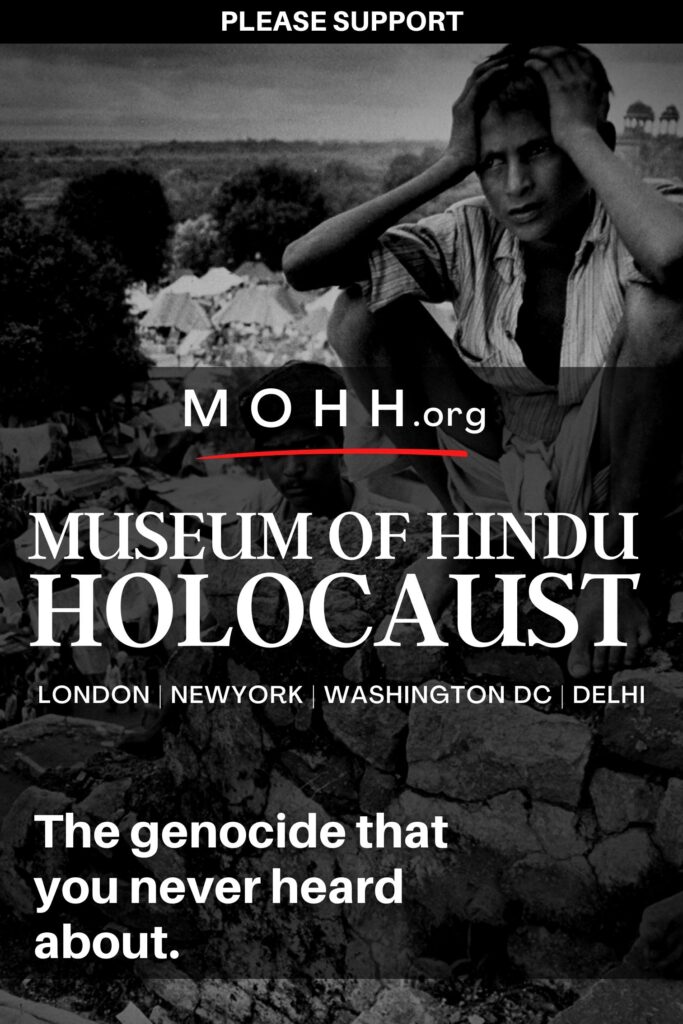[ Reported as seen ]
A group of 10 militants targeted the village, forcibly taking 20 Hindu men from their homes. These captives were then transported to a nearby rocky mountain area where they were executed. The incident resulted in the injury of five villagers. The brutal actions of the militants brought tragedy and devastation to the community, leaving a lasting scar on the affected individuals and highlighting the urgent need for security and protection against such acts of violence.
Introduction
The 2001 Kishtwar massacre stands as a tragic event in the history of Jammu and Kashmir. On 3 August 2001, 17 Hindu villagers in the village of Ladder near Kishtwar in the Doda District fell victim to a brutal attack orchestrated by militants belonging to the extremist group Lashkar-e-Taiba. The incident sent shockwaves through the region, leaving a deep scar on the affected community and highlighting the pervasive violence plaguing the area.

The massacre unfolded as the peaceful villagers went about their daily lives, unaware of the impending horror. Lashkar-e-Taiba militants, known for their extremist ideology and violent tactics, infiltrated the village and launched a ruthless assault on the unsuspecting Hindu residents. The attackers, armed with sophisticated weapons, unleashed a wave of violence, targeting innocent men, women, and children indiscriminately.
The villagers, caught off guard by the sudden onslaught, faced a horrifying ordeal as they grappled with the terrifying reality of imminent danger. Amid the chaos and panic, the militants showed no mercy, executing their sinister plan with cold-blooded efficiency. The viciousness of the attack was further exacerbated by the fact that it targeted civilians who were simply going about their daily lives, emphasizing the brutality and disregard for human life exhibited by the perpetrators.
The repercussions of the Kishtwar massacre were felt far and wide. The community was left traumatized, grieving the loss of their loved ones and struggling to come to terms with the senseless violence that had shattered their peaceful existence. The incident sparked outrage and condemnation across the region, as people demanded justice and an end to the cycle of violence that had plagued Jammu and Kashmir for far too long.
In the aftermath of the massacre, investigations were launched to identify and apprehend the perpetrators responsible for this heinous act. The authorities worked tirelessly to bring the culprits to justice and provide some semblance of closure to the grieving families. The incident served as a grim reminder of the prevailing security challenges faced by the region and highlighted the need for enhanced measures to safeguard the lives and well-being of the local population.
The 2001 Kishtwar massacre stands as a dark chapter in the history of Jammu and Kashmir, underscoring the devastating impact of terrorism on innocent lives. It serves as a painful reminder of the urgent need for peace, reconciliation, and efforts to address the root causes of violence in the region.
The massacre
The 2001 Kishtwar massacre remains etched in the memory of Jammu and Kashmir as a harrowing incident of violence and loss. On August 3, 2001, a group of 10 militants descended upon the village near Kishtwar in the Doda District, unleashing a wave of terror that resulted in the brutal killing of 20 Hindu males. This ruthless act, orchestrated by militants associated with Lashkar-e-Taiba, sent shockwaves throughout the region, leaving a lasting impact on the affected community.
The peaceful village was abruptly disrupted as the militants stormed into the homes of the unsuspecting villagers. With malicious intent, they forcefully dragged 20 men from their houses, snatching them away from the safety of their families and into the clutches of terror. Bound by fear and disbelief, the villagers stood witness to their loved ones being forcibly taken away, their lives hanging in the balance.
Escorting their captives to a nearby rocky mountain belt, the militants callously carried out their sinister plan. With a chilling disregard for human life, they mercilessly executed the abducted men, leaving behind a trail of tragedy and grief. The echoes of gunshots reverberated through the mountainous landscape, staining the serenity of the surroundings with bloodshed and loss.

Amidst this act of terror, five villagers managed to escape with their lives, albeit bearing the wounds of this horrifying ordeal. Their survival stood as a testament to both the resilience of the human spirit and the stark reality of the brutality inflicted upon their fellow villagers.
The aftermath of the Kishtwar massacre left an indelible impact on the affected community and reverberated throughout the region. Shock and anguish gripped the hearts of the villagers as they grappled with the unimaginable loss of their loved ones. Grief-stricken and traumatized, they sought solace in each other’s embrace, finding strength in their shared pain.
The incident sent shockwaves through society, triggering an outpouring of condemnation and demands for justice. Authorities swiftly launched investigations to apprehend the perpetrators responsible for this heinous act of violence. The pursuit of justice became a paramount goal, not only to bring closure to the grieving families but also to send a resolute message that such acts of terror would not go unpunished.
The Kishtwar massacre served as a stark reminder of the prevailing security challenges faced by the region. It underscored the need for concerted efforts to combat terrorism and ensure the safety and well-being of the local population. The incident further galvanized the collective resolve to confront the forces that sought to sow seeds of discord and division.
The scars left behind by the Kishtwar massacre serve as a constant reminder of the urgent need for peace, reconciliation, and the pursuit of a harmonious coexistence. The resilience and spirit of the affected community stand as a testament to their unwavering determination to rebuild and move forward despite the unimaginable loss they have endured.
The 2001 Kishtwar massacre remains a tragic chapter in the history of Jammu and Kashmir, one that serves as a poignant reminder of the devastating consequences of violence and the urgent imperative to foster a society where peace, tolerance, and understanding prevail.
Aftermath
The aftermath of the 2001 Kishtwar massacre reverberated across the nation, prompting widespread discussions and debates within the Indian Parliament. The opposition criticized the government for failing to prevent such a devastating act of violence, emphasizing the need for stronger security measures and swift action against the perpetrators.
In the pursuit of justice, security forces intensified their efforts to bring the culprits to account. Three days after the massacre, a significant breakthrough occurred when Lashkar-e-Taiba terrorist Mujib-ur-Rahman was neutralized by security forces. His logbook, recovered during the operation, contained a chilling entry dated August 3, confirming the involvement of the Lashkar-e-Taiba: “The warriors of the Lashkar-e-Taiba have killed 19 unbelievers. This is our challenge to the Indian government.” The revelation further solidified the link between the militant outfit and the horrific incident, strengthening the resolve to dismantle such extremist organizations and prevent future acts of terror.

The shock and outrage generated by the Kishtwar massacre manifested in a complete bandh (shutdown) observed in the city of Jammu the following day. The shutdown served as a powerful form of protest, uniting the community in expressing their grief and solidarity with the victims’ families. Demonstrators took to the streets, vehemently condemning the carnage and demanding justice for the lives lost.
Symbolic acts of defiance were witnessed during these protests, as groups of demonstrators set Pakistani flags ablaze and burned effigies of General Pervez Musharraf, the then-President of Pakistan. These expressions of anger and frustration aimed to highlight the perceived role of external forces in fueling and supporting such acts of violence. The actions underscored the demand for accountability and a strong stance against any form of terrorism that threatened the peace and stability of the region.
The aftermath of the Kishtwar massacre also had a profound impact on the affected community. Grief-stricken and traumatized, the families of the victims sought solace in each other’s support, drawing strength from their shared pain. The incident served as a stark reminder of the vulnerability and fragility of their lives, prompting a renewed commitment to unity and resilience.
Furthermore, the massacre led to a broader conversation on the security challenges faced by the region and the imperative for enhanced measures to safeguard the lives and well-being of the local population. It prompted a renewed focus on counterterrorism efforts, the strengthening of intelligence networks, and the cooperation between security forces and communities to prevent such acts of violence.
Ultimately, the aftermath of the Kishtwar massacre highlighted the urgent need for peace, unity, and collective action against terrorism. It emphasized the importance of fostering a society where all individuals can coexist without fear or prejudice. The incident served as a rallying point for communities and authorities to come together, addressing the underlying issues and working towards a more secure and harmonious future.
The scars left behind by the Kishtwar massacre continue to remind us of the human cost of violence and the resilience required to heal and rebuild. It stands as a testament to the unwavering spirit of the people, their determination to overcome adversity, and their commitment to ensuring a safer and brighter tomorrow.
Conclusion
The 2001 Kishtwar massacre left a lasting impact on the affected community and the nation as a whole. It served as a stark reminder of the pervasive threat of terrorism and the need for unwavering efforts to combat it. The aftermath of the tragedy witnessed significant developments, including discussions in the Indian Parliament, the elimination of a key terrorist figure, widespread protests, and a renewed commitment to security and unity.
The incident prompted intense debates and scrutiny within the Indian Parliament, with the opposition raising concerns about the government’s ability to prevent such heinous acts of violence. The discussions highlighted the urgency of implementing stronger security measures and ensuring swift action against the perpetrators to prevent future tragedies.
The neutralization of Lashkar-e-Taiba terrorist Mujib-ur-Rahman, who was found to have a direct link to the massacre through his incriminating logbook entry, represented a significant step forward in the pursuit of justice. It underscored the determination of security forces to dismantle extremist organizations and hold them accountable for their actions. The elimination of Rahman further validated the connection between the militant outfit and the brutal incident, reinforcing the need for continued efforts to combat terrorism.
The response from the community was one of grief, outrage, and solidarity. The complete shutdown observed in Jammu showcased the collective resolve to stand against terrorism and seek justice for the victims. Demonstrators expressed their anger by burning Pakistani flags and effigies of General Pervez Musharraf, symbolizing their frustration with external forces perceived to be supporting such acts of violence. These actions exemplified the community’s determination to hold responsible parties accountable and protect the peace and stability of the region.
The aftermath of the Kishtwar massacre also prompted a broader conversation on the security challenges faced by the region. It emphasized the crucial role of intelligence networks, counterterrorism efforts, and community cooperation in preventing future incidents. The tragedy served as a catalyst for renewed commitment to building a society where individuals can coexist without fear, prejudice, or violence.
In conclusion, the aftermath of the 2001 Kishtwar massacre highlighted the need for sustained efforts to combat terrorism, strengthen security measures, and foster unity and resilience. It brought attention to the vulnerability of communities and underscored the imperative of working together to ensure a safer and more peaceful future. The tragedy served as a powerful reminder of the human cost of violence and the collective responsibility to prevent such atrocities from happening again. It is a testament to the resilience and determination of the people, who continue to strive for justice, healing, and a society free from the shadows of terrorism.
CITATIONS AND SOURCES
https://en.wikipedia.org/wiki/2001_Kishtwar_massacre
https://www.jstor.org/stable/23528743
https://timesofindia.indiatimes.com/india/kishtwar-killings-cops-identify-terrorist-release-pic/articleshow/68879580.cms


![The Kisthwar massacre [Jammu and Kashmir, India]](https://www.projecthindukush.com/wp-content/uploads/2023-08-08_21h58_24-550x420.png)
![The Kisthwar massacre [Jammu and Kashmir, India]](https://www.projecthindukush.com/wp-content/uploads/2023-08-08_22h20_49-550x420.png)
![The Kisthwar massacre [Jammu and Kashmir, India]](https://www.projecthindukush.com/wp-content/uploads/Kishtwar-Cauldron-1-550x420.jpg)
